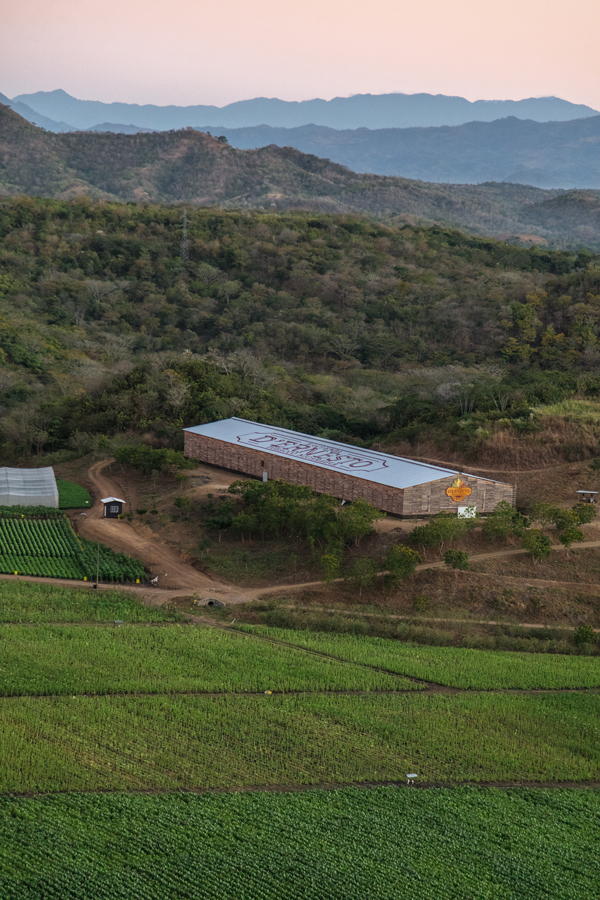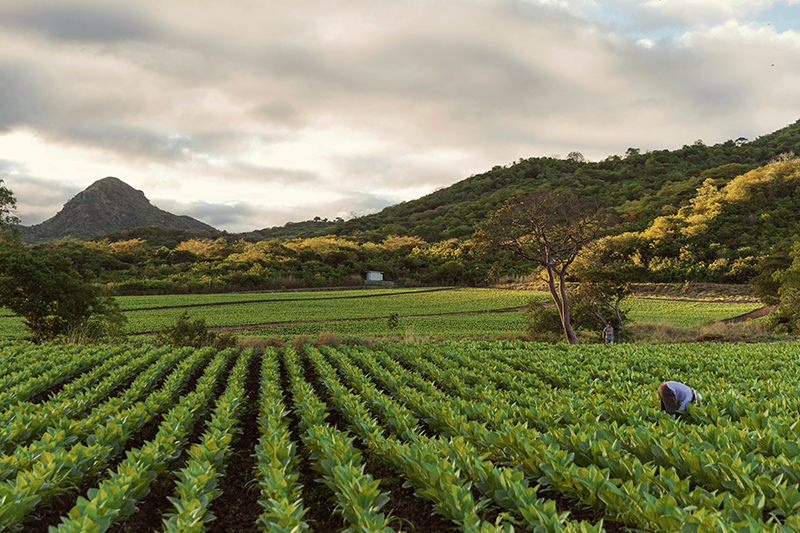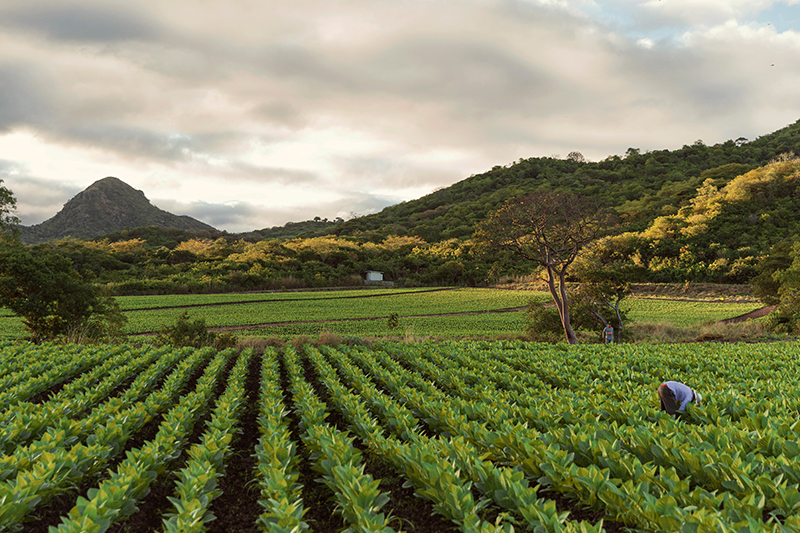PCA | July 31, 2024
The Oliva family’s roots run deep in the soil of Cuba and Nicaragua. Patriarch Melanio Oliva began growing cigar tobacco in Pinar del Rio, Cuba in 1886. The family tradition continued with his son Facundo, who passed the torch to Gilberto Oliva in the late 1950s. When it became untenable to continue brokering tobacco under the Fidel Castro regime, Gilberto Oliva emigrated from Cuba to various tobacco growing countries, ending his search for the perfect soil and climate in Nicaragua. From there the family expanded into producing finished cigars for export. Gilberto was joined in the business by his family. Sons Gilberto and Carlos oversaw the growing and production side in Nicaragua. Daughter Jeannie and son José both worked out of Miami, FL, where Jeannie ran the office and José headed up the sales team.


Their early forays into the U.S. market were principally bundles of handmade, flavored cigars, but as the explosive growth of premium cigar consumption took hold in the mid 1990s, Oliva debuted their first premium line, The Grand Cameroon, featuring a unique 6 1/2 x 60, box-pressed figurado, a stunning cigar at a modest price point. The series was an immediate success, spawning the follow-up line of the box-pressed Grand Maduro, which ramped up the flavor profile and introduced new shapes, such as the 8 x 52 Presidente.
The success of these lines led to the release of the super premium Oliva “O”, a dark, fuller bodied Nicaraguan puro presented in lacquered humidor-style boxes. From there it was off to the races, with each new series offering bolder blends and unique packaging. The “O” Bold line preceded the eye-opening Master Blends line that featured a laser-etched logo on the wrapper leaf, and a box with a painted canvas on the lid, which was removable for wall-mounting.
Perhaps their boldest move occurred in 2006 with a complete brand makeover. The various distinctive series were folded into a new, sleek uniform package and presentation. Natural cedar boxes of 20 cigars were emblazoned with the sophisticated new OLIVA logo, giving a uniform look emphasizing the Oliva brand. The principle core lines, Serie G and Serie O, were identified on the box, and on the cream and gold cigar band with the simple inclusion of the letter G or O. The newer Connecticut Reserve was likewise packaged in the same 20-count box, with the series name prominent on the lid. Shelf space devoted to Oliva cigars now presented a cohesive lineup of the brand’s diverse product mix.
When the Serie V was introduced in 2007, it stood out with its bolder red, gold and brown cigar band, indicative of its more robust strength and flavor. A gold embossed, brown-stained slide top box of 24 cigars further hinted at the V’s Cuban-style profile. And yet it still called to mind the uniformity of the company’s image. The brand’s makeover, and the inclusion of the fuller bodied Serie V, rocketed the Oliva portfolio to the top of the sales charts, bestowing universal name recognition on the entire lineup.
While the Oliva brand was rising to the top of the U.S. premium cigar market, Belgium’s Vandermarliere Cigar family was broadening its footprint across Europe and beyond. Founded in 1926 by Maurits Vandermarliere in the attic above his cigar shop, the small company expanded to its first factory in 1936. By 1965, under the guidance of son Guido, whose focus was on exporting the company’s cigars, Vandermarliere rose to the next level through the acquisition of two cigar companies, Neos and TAF, in the mid to late 1970s, when the company took the name of their principal brand, J. Cortès. In 1986 J. Cortès opened a factory in Sri Lanka, eventually expanding its global reach to 80 countries.
Fred Vandermarliere, the latest generation of the family, came on board in 2005, bringing his youthful energy and enthusiasm to the 80-year-old manufacturing concern. He also brought a love of long-filler, premium handmade cigars, and a desire to add that category to the company’s portfolio. While he was in Central America, seeking a cigar manufacturer to collaborate with, he was informed that the Olivas might be willing to sell their operation. In time an agreement was struck, and in July, 2016 the purchase was announced.
“I remember that day, because they called me to tell me that they’d sold, and I was scared to death,” recalls Vice President of Sales Jeff Nolen. “But José assured me they’re a great family, just like the Olivas, and they’d keep the company intact. They’ve been true to their word 100 percent.”
Laure Boisbouvier, Marketing Director for Vandermarliere Family Cigars and Oliva, was equally stunned, and equally pleased to hear the news of the Oliva acquisition: “Fred came back from the U.S. and told us about the purchase. That was in 2016. He said that we’re part of the family, and there would not be any big changes.” And although she moved to the U.S. to take charge of Oliva marketing in 2022, she notes, “In 2017 was the launch of Oliva on the international market, so I took over Oliva, but just for international.” Now she works with Nolen and CEO Corey Bappert, from Miami, promoting the Oliva brand throughout the U.S.A., as well as in Europe. As recently as March of 2024 Boisbouvier and Fred Vandermarlier attended the grand opening of the first Oliva Cigar Lounge in Europe, located in Gronau, Germany.
Other recent innovations include the acquisition of Les Fines Lames, a French designer and manufacturer of fine cigar cutters, which are sold here by Oliva’s sales team. The line, which features a variety of exotic woods for the knife/cutter’s handles, also includes ashtrays and a unique punch cutter bracelet. Prices for these items are in the mid $100.00–$200.00 range.
Oliva Cigars exhibited at the 2024 PCA Convention and Trade Show in Las Vegas, and reported brisk sales: “It was a very good show for us,” says Nolan. “Our Limited Edition is going out in September. We showed it, even though we didn’t take orders, because we had the prototypes ready.”
Boisbouvier adds, “It’s a Serie V Melanio 5 1/2 x 60 Grand Toro this year. We did a beautiful collaboration with an artist named Paul Montag, a well-known French pianist.” Montag smoked the new cigar for about 45 minutes, and while smoking he conceptualized music which was inspired by the cigar. He then recorded a 45 minute album, and one can hear it by scanning a QR code inside the box. Nolen adds, “It’s a round Melanio, so it’s totally different from our box press.”
Another unique limited release by Oliva will be the Roaring Twenties, evocative of a time when indulgences like cigar smoking were warmly embraced by society. As with the Melanio Limited Edition, it will be out by year’s end. The super high-end cigar is limited to 300 boxes being produced, and will include a 24 karat gold-plated Les Fines Lame cigar cutter. The proceeds will go toward the Oliva Foundation in Nicaragua, which helps to support the local community, and the children of Nicaragua.
The combined efforts of Laure Boisbouvier’s marketing and Nolen’s sales force, with the support of Fred Vandermarliere and José Oliva, are poised to see Oliva Cigar’s continued success, well into the foreseeable future.
For more information about Oliva Cigars, please visit olivacigar.com.
– Photos courtesy of Oliva Cigars. Story by Larry Wagner.
This story first appeared in PCA The Magazine, Volume 2, 2024. To receive a copy of this magazine you must be a current member of PCA.

